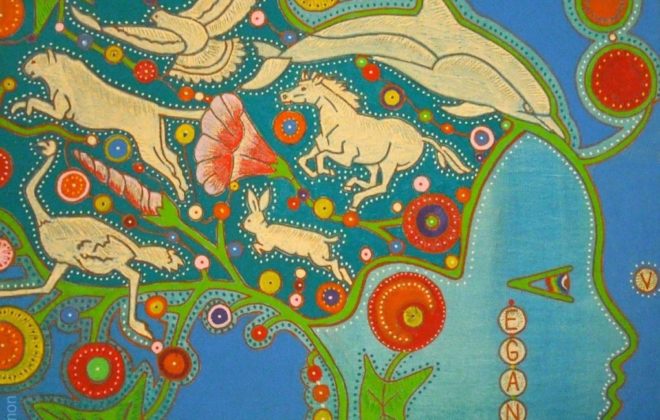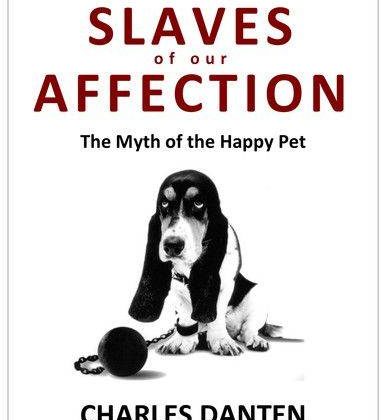Animal Rights Movement, Strategies & Repression
Melvin Josse has been an activist of the animal rights movement in France for a decade. I discovered him in November 2016 at the launch of the French animal rights party of which he is one of the co-founders.
In 2013, he wrote a book entitled “Militancy, Politics and Animal Rights” in which he questions the effectiveness of the French animal rights movement. Now, he is completing a doctorate in Political Science at the University of Leicester. His thesis is on the repression of the animal rights movement in Europe.
Melvin is part of the reformist abolitionist movement. In this interview he explains his vision of the animal right movement and what should be done politically to to put an end to animal exploitation
The video interview is in French with English subtitles. The script is available in French and English.
My name is Melvin Josse. I have been an animal rights activist for the past ten years and I am completing a doctorate in Political Science.
I have been very interested in the political strategies of the animal rights movement in France and other countries. I published a book entitled “Militancy, Politics and Animal Rights” and my thesis is more specifically on the repression of the animal rights movement in Europe.
Part I: Social strategies and political strategies
I make a distinction between social strategies and political strategies. Social strategies aim to change individuals in terms of consumer behaviours for example, as opposed to political strategies that aim to change the rules of society, therefore, the law, the legislation.
I think that the animal rights movement, especially in France but not only, often tends to mainly focus on social strategies and neglects political strategies of lobbying and political campaigns.
I think that this focus on social strategies, conversion strategies to veganism, is also linked to the emergence of what I call the fundamentalist abolitionism …
In the animal rights movement, we can differentiate two main groups: the welfarists, on the one hand, who do not ultimately seek to abolish animal exploitation but seek to adapt it in order to limit animal suffering as much as possible. And, on the other hand, the abolitionists who want to put an end to animal exploitation.
Among abolitionists, we can differentiate between abolitionist reformists, that is, those who have a long-term goal of animal exploitation abolition but who think that the best way is to go through reforms and also to make politicians consider the animal issue as a full political issue; and fundamentalist abolitionists, those who, on the contrary, will consider, as Gary Francione, an American professor of law who has written a lot on this issue and who supports this point of view, that the promotion of animal exploitation reforms will make people more comfortable with the idea of exploiting animals and in the end would be counterproductive to achieving abolition.
Within the animal rights movement, there is an almost identity-based aspect that has developed around veganism, around vegan identity. It has been very positive at a certain point to mobilise, to recruit activists so that there was a sense of belonging, and this is what every social movement needs to develop. But we reach a phase where we must go beyond this identity, which is also excluding, in order to mobilise people who do not yet recognise themselves in that identity but who want to act for animals.
Part II: Synergy and networking
What I have seen in studying the movement in different countries is that greater success has been achieved when the animal rights activists have succeeded in creating synergy; not necessarily in pooling their different resources, but in collaborating using different types of resources.
I differentiate between financial resources; militant resources, that is the capacity to mobilise on the ground; and resources of legitimacy, meaning credibility, access to decision-makers etc… there are very few groups, if any, who can claim to have in large quantities these three types of resources.
If you take L214 for example, it is an association that is going to have a lot of militant resources, so they are able to mobilise a lot of people on the ground, in the street etc… but they will hardly have access to decision makers and are not necessarily going to have access to the negotiating tables with the industrial sectors, the government etc.
Conversely, 30 Million Friends is a large association that has a lot of financial resources, resources of legitimacy, but very few militant resources; they will not succeed in mobilising people on the ground.
So in France the animal rights movement should more often be able to leverage synergy of its resources and this requires greater cooperation within the movement, more consultation. And this is maybe what is still missing in France, even if this has been developing for a few years and some specific collaboration has taken place. Recently, there was the Political Animal manifesto, which was signed by 26 national NGOs. This is very positive but it is really necessary to go further and that consultation and cooperation last over time.
In France, tools that allow cooperation between activist associations and a more sustained and long-term consultation are missing at a political level. And also tools that create a network between supportive politicians and people from associations.
What our opponents actually do are events such as networking through clubs, for example the “club of the pig’s friends” or the ” foie gras club”, which bring together politicians and representatives of industrial sectors and facilitate the creation of personal relationships between these people.
And that’s what we see for hunting. The political world and the hunting world are often very connected and it is through these hunting parties that stronger bonds are created.
While in France, so far the lobbying actions that are done are often one-offs. We call a member of parliament, for example, if we want to push an amendment or if we want to enforce a law, but we don’t have real interpersonal relationships that are sustained over time.
What is needed is to create a political network around the issue of animals.
Part III: The rise of repression
So what we have observed for a few years in more and more countries it is a rise of the repression when there is a rise of the animal rights movement. It is something that we have not seen much in France, although there are examples but less important than in other countries. I think it is also because, until very recently, but there is currently a real change, the movement was not perceived in France as a real threat to the economic interests to which we are opposed.
I differentiate three types of repression. What I call the discursive criminalisation is the development of rhetoric that equates animal activists with terrorists, eco-terrorists, extremists, and which serves to legitimise the other forms of stronger repression. Interestingly, one can see, for example, whether one looks at the reports of intelligence services in different countries, in 2006/2007 a standardisation of the lexical field used around the terms eco-terrorism, extremists of the animal cause etc.
Then there is the legislative criminalisation, which consists in passing new laws that restrict the legal field of action for the militants. For example in the United States with the Ag-Gag laws, which repress very very severely the mere fact of taking pictures in breeding or slaughterhouse without the agreement of the owner. This has been settled at the state level and it is equated to terrorism in some states.
Knowing that it does not matter whether one breaks in or not, it is not the point; it is really taking images. This applies to activists as well as whistle-blowers, slaughterhouse employees, such as what we saw in France very recently, or investigative journalists. Basically, it’s a way of hiding those places to the public.
We could take many other examples but this is a particularly striking example because, as we saw with L214 in France, the fact that the animal cause has become a question so important in France is mainly because of the videos of L214. So it is a tool that is crucial and if one is deprived of this tool, it is problematic.
And the third type of repression is coercive repression, which is often very high-profile arrests, infiltrations, by the police, for example, but also increasingly by private companies. What is interesting and can be seen in several countries, notably in Austria or Spain where there have been fairly significant cases of repression. Whether it was in Austria or Spain, it was the leaders of the movement that were arrested and it was done in a way that led the public to believe that they were really dangerous terrorists, with helicopters, streets closed, hooded policemen as can be seen for arrests of jihadists or things like that.
There is a great discrepancy between the reality of the alleged acts, regardless of whether they were committed by these people or not, so in Spain it was a matter of releasing mink from a fur farm. So it’s not ultra-violent terrorism either, but there’s a huge discrepancy between what’s shown and the reality of the facts.
Part IV: From symbolic to pragmatic demonstration.
What are missing today in France are political campaigns with demands that are achievable in the short term. What mobilises militants today are either actions of symbolic testimony, therefore staging where we are going to put ourselves in the place of animals or demonstrations like the veggie pride, where we claim to be vegetarians for not killing animals, so it’s a way to raise awareness. We’re going to have the walk for the closure of slaughterhouses or for the end of speciesism, which are political demands but are so long term….
Someone who went to demonstrations against the labour law went there thinking that these demonstrations would make it possible to ensure that this law does not pass. People who go to the march for the closing of the slaughterhouses do not reckon that this march will end the slaughterhouses. It is more a means of spreading this claim, of saying that it exists.
I think that we should have campaigns with both institutional actions, lobbying etc. but also with pressure in the street. And for that, it would be necessary to mobilise militants on shorter-term demands and typically the ban on cage farming.
There is a sociologist called Doug McAdam who invented the term cognitive liberation. He has worked extensively on the rise of social movements, the different dynamics that make a social movement go through phases of expansion or regression, etc., and one of the elements of this cognitive liberation which, according to him, is necessary for all social movements is a sense of collective effectiveness in action. That is, people mobilise because they see that they are successful. There is a concrete and tangible impact from the action that is being taken.
I think it would be necessary today, if we wanted to mobilise more widely, that the genuine militant vegan base mobilises on campaigns that can lead to concrete victories.
We have seen for a few years that things are moving in the public opinion but on the other hand, it is true that at the level of the legislation there is still very little change. Do not despair. We see, for example, in Austria that things can go very quickly. Once you have a virtuous dynamic that is put in place by the processes I have just described, things can go very quickly.
Austria was a country, which was extremely late in its animal legislation, compared to many European countries and which has become one of the most advanced countries in the world, and this was done in a few years. These things can progress faster than you think if you use the right tools and put in place the right dynamics.



